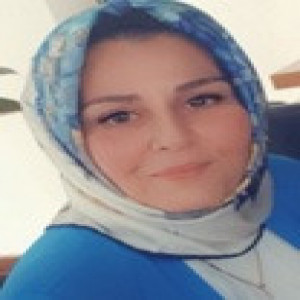Conference
2021
Two Feature Selection Methods Comparison Chi-square and Relief-F for Facial Expression Recognition
2021-03
ICMAICS 2020
Feature selection method represents one of the main keys that has direct influence on classification accuracy. During the last two decades, researchers have given a lot of attention in feature selection approaches due to their importance. This paper provides a comparative approach between the two feature selection methods: Chi-Square and Relief-F. The two methods rank the features according to their score. The first highest six emotion features from the both methods are selected. The six features are used to compare the accuracy ratio among the four classifiers: Support Vector Machine, K-Nearest, Decision Tree, and Radial Base Function. These classifiers are used for the mission of expression recognition and to compare their proportional performance. The ultimate aim of the provided approach is to use minimum number of features from the both methods in order to distinguish the performance accuracy of the four classifiers. The provided approach has been applied on CK+ facial expression recognition dataset. The result of the experiment illustrates that K-Nearest Neighbour is the most accurate classifier on the both feature selection methods according to the employed dataset. The K-Nearest Neighbour accuracy average rate for Chi-square is 94.18% and for Relief-F is 94.93%.
An Analytical Appraisal for Supervised Classifiers’ Performance on Facial Expression Recognition Based on Relief-F Feature Selection
2021-03
ICMAICS 2020
Face expression recognition technology is one of the most recently developed fields in machine learning and has profoundly helped its users through forensic, security, and biometric applications. Many researchers and program developers have allocated their time and energy to figure out various techniques which would add to the technology’s functionality and accuracy. Face expression recognition is a complicated computational process in which is implemented via analyzing changes in facial traits that follow different emotional reactions. This paper endeavors to inspect accuracy ratio of six classifiers based on Relief-F feature selection method, relying on the utilization of the minimum quantity of attributes. The classifiers in which the paper attempts to inspect are Multi-Layer Perceptron, Random Forest, Decision Tree, Support Vector Machine, K-Nearest Neighbor, and Radial Basis Function. The experiment illustrates that K-Nearest Neighbor is the most accurate classifier with the total accuracy ratio of 94.93% amongst the rest when applied on CK+ Dataset.
2019
Different Model for Hand Gesture Recognition with a Novel Line Feature Extraction
2019-05
ICOASE2019
Abstract— Hand gestures are commonly used for communication between both impaired community and normal people. Sign languages stand for the human languages of deaf people. They form the most growing domain of research worldwide. A number of techniques were developed in this area lately. It is recognized by means of deducing the features involved in the use of hand gesture. As a matter of fact, various approaches, namely the vision-based, the data-glove-based, the colored-marker and the Electromyogram (EMG) approaches have been utilized by researchers to recognize the different hand gestures implemented in many different fields such as the whole approaches which can be divided into four main categories, viz. Data Collection, Image Processing, Feature Extraction, and Gesture Recognition. Only a few of those categories have been discussed in this paper to be compared between the accuracy rates by applying Artificial Neural Network (ANN) classification. This classification is based on different models and a novel method for Real-Time Hand Gesture Recognition System (RTHGRS). The latter has used one line (fifty features) extracted from black and white processed images to recognize the numbers from (1-10) in Kurdish Sign Language (KurdSL) using one hand only with accuracy 98%.
2018
Dynamic Hand Gesture Recognition System for Kurdish Sign Language Using Two Lines of Features
2018-10
2018 International Conference on Advanced Science and Engineering (ICOASE)
Hand gesture recognition forms a great difficulty for computer vision especially in dynamics. Sign language has been significant and an interesting application field of dynamic hand gesture recognition system. The recognition of human hands formed an- extremely complicated mission. The solution for such a difficulty requires a robust hand tracking method which depends on an effective feature and classifier. This paper presents a novel, fast and simple method for dynamic hand gesture recognition based on two lines (hundred) of features extracted from two rows of a Real-Time video. Feature selections have been used for hand shape representation to recognize the dynamic word for Kurdish Sign Language. The features extracted in real time from pre-processed hand object were represented through the optimization values of binary captured frame. Finally, an Artificial Neural Network classifier is used to …
2017
A Comparative Study of a New Hand Recognition Model Based on Line of Features and Other Techniques
2017-04
International Conference of Reliable Information and Communication Technology
Information technologies are developed and grown all over the world. They depend on the computer system. Some techniques such as hand recognition are used for performing accurate recognition. The main goal of this research is to develop a system that analyzes specific human gestures then interpret this information by using computer system. This paper represents a comparative study between a new novel system called Real Time Hand Gesture Recognition System RTHGRS based on one line of features and other various techniques. The research has come out with 98% recognition compared to other researches in this filed.
Back
